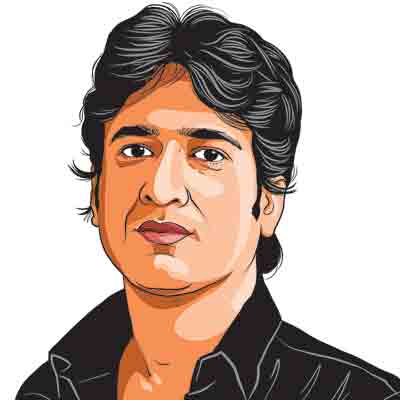Opinion There is a story in Chhattisgarh vote numbers
The Chhattisgarh polls were also made possible by the joint efforts of security forces,booth-level officers,district collectors and the media.
A day after the second phase of Chhattisgarh voting,again in historic numbers,a Hindi newspaper in Raipur carried a front-page story listing the names of some senior bureaucrats who had not cast their votes. Amid the banner headlines celebrating the historic vote,this public disapproval of babus,who did not even get a voter card,epitomised the significance elections now have in popular discourse.
The Election Commission can take the credit,but the Chhattisgarh polls were also made possible by the joint efforts of security forces,booth-level officers,district collectors and the media all ensuring that voters travelled to booths. Even as the numbers indicated that the turnout would exceed all expectations,they kep exhorting people to go out and exercise their right. Consequently,first the Maoist-hit areas saw an unexpected 75.53 per cent voting,and then the other zones recorded 78.5 per cent,making it a total of 77 per cent. A record for Chhattisgarh,pretty high for India as well. Kurud constituency saw a nearly impossible 88 per cent vote.
Of course,the free and fairness of a poll where security personnel to voter ratio was 1:6 can always be debated. One also cannot completely discount the hypothesis that Bastar voters could not have turned out from interior villages without being asked by Maoists to choose certain candidates. The victory of democracy was probably ensured by the tacit consent or a tactical choice of the rebels.
However,few can dispute that even the mightiest forces,whether donning khaki or red,cannot get so many voters to travel 30 km from their homes to vote.
While the truth may fall somewhere between these two poles,the fact remains that the voter in Bastar,whose contact with the world is mostly limited to yearly negotiations with traders of forest produces,waded through rivers and forests strewn with landmines to reach poll booths. The tribal woman,who has never seen any political activity in her backyard,became the first to enjoy the right to disapprove candidates through NOTA.
Significantly,under-35 women comprised 35 per cent of the total 1.68 crore voters,while 45 per cent of the voters were below 30 years. Their vote preferences will be revealed later,but the new government should note in advance that this voter demands professional education and quality jobs,not a basket of freebies both parties so passionately promise.
Ashutosh is a special correspondent based in Raipur
ashutosh.bhardwaj@expressindia.com



